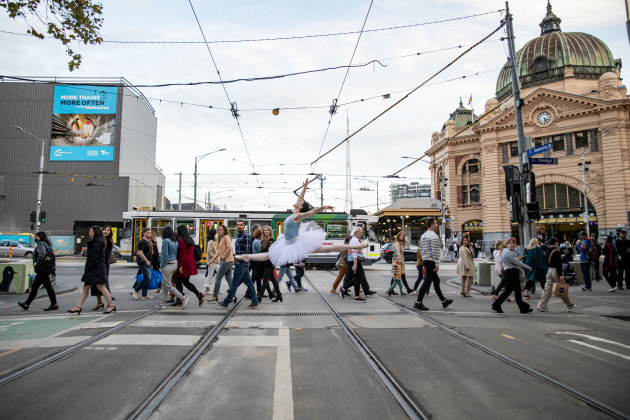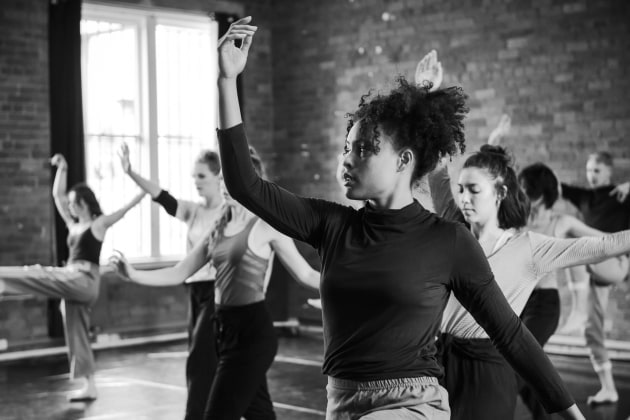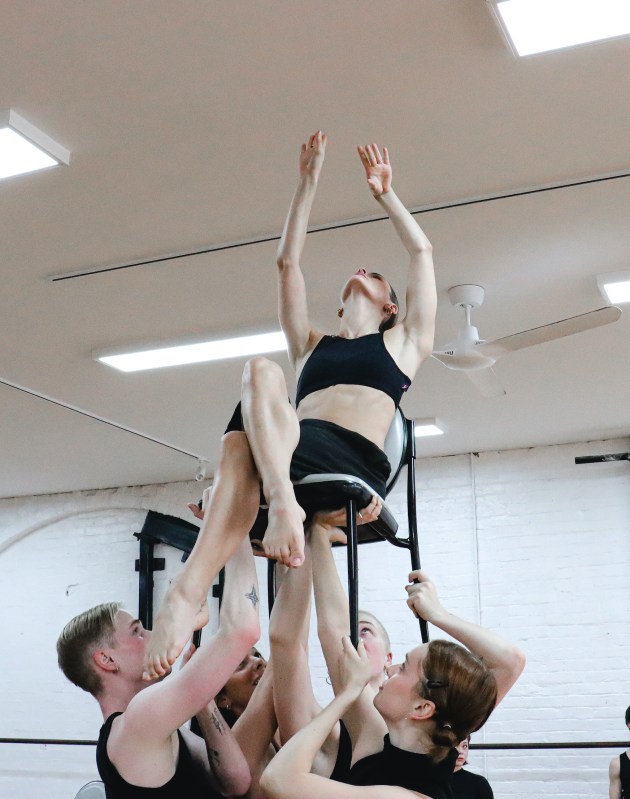How to make your own career pathway

Auditions are just one way to break into the dance industry in 2023. Leila Lois talks to company directors about ways dancers can create their own job opportunities.
The dance industry has often relied upon auditions to determine the next big thing. Auditioning successfully for an established dance company used to be a foot in the door to the dance world. Now, changes are afoot. The entry points to dance companies, residencies and opportunities are diverse and various. But how can you find these opportunities, and make yourself “known” in the increasingly changing dance world?
One of the notable changes is the proliferation of small dance companies, in contrast with the primacy of major dance companies. The pathways into these companies are also various, with residencies, commissioned work and festival projects a few of the many.
Speaking to several company directors and renowned choreographers in Australia and New Zealand threw some light on what it takes to break into the dance industry, as an emerging artist in 2023.
Moving on from the audition
"I think I’m finding increasingly that auditions, being such a short interaction, aren’t the best way to select dancers for my works." says Lucy Guerin, international choreographer and founding director of Lucy Guerin Inc, in Melbourne. "I look for people who have an understanding of what I do through movement … [who have] courage and are not afraid to be open to new things that may challenge their concept of what dance is, such as acting, singing … you can’t see all these things in an audition," she adds.

While Guerin occasionally holds large open auditions, dancers are quite often appointed through meeting them in workshops or the company’s secondment opportunities, which can be found here. "Seeing dancers in their secondments of a week gives me a good idea of how you might fit the company," Guerin says. Sometimes she spots dancers in other works, or while visiting tertiary training programs. "Get yourself out there, be persistent," she urges.
Antony Hamilton, Director of Melbourne-based company Chunky Move, also says that auditions are becoming less important in hiring, for inclusivity reasons. "We are very conscious of the potential for loss of income to independent artists who would pay for travel and accommodation to attend an audition from interstate or in some cases overseas." Instead, he says, he attends festivals and performances, and may spot emerging artists there. He also encourages applications via email, of a CV and video sample of your dancing, via the email address on their website.
Many emerging dance artists use social media now to get themselves noticed by companies and directors, Hamilton points out, leveling the field somewhat. However, he emphasises the importance of interacting with other dancers and choreographers at workshops and auditions, "you could have the most curated social media presence, but it is your in-person dance skills and desire to create meaningful art that matters most." Chunky Move, like Lucy Guerin Inc, offers regular secondments and workshops, a great place to, as Hamilton puts it, "be proactive" in your pursuit of dance roles.
 Chunky Move director Antony Hamilton: 'Auditions are becoming less important in hiring, for inclusivity reasons.' Photo by Peter Rosetzky
Chunky Move director Antony Hamilton: 'Auditions are becoming less important in hiring, for inclusivity reasons.' Photo by Peter RosetzkySome dance companies, however, still use open auditions as their major point of entry. Sydney Dance Company, for example, conducts auditions by invitation and offers a year long traineeship for promising dancers in "Pre-Professional Year" courses, often leading to appointment within the company. SDC Rehearsal Director, Richard Cilli, highlights the importance of "doing your research" before auditioning however, as he says all dance companies have a different emphasis/style. "For example, at SDC much of our choreography requires dancers to have athleticism, technique and also some floor work," Cilli says.
Scimm. Dance Company, an independent Melbourne-based contemporary dance company, is one example. The directors Scott Pokorny and Tim Barnes run an annual open audition day, which helps them to select most of their company members for the next year. They also require dancers to send prior video footage and present a headshot and CV on the audition day, something commonly expected for dance company applications.
Residencies

Other pathways increasingly opening to emerging dance artists are residencies. Many independent dance companies offer time and space in their studios, with or without the staging of work at the end of the residency. Residencies are a great opportunity, as Lucy Guerin says, for recruiters to see how dancers might "fit" the company. Guerin chooses one choreographer/dance artist a year to do a year-long residency with the company and subsequently has recruited dancers from this pool. A few examples of dance residencies available include In Residence at Dancehouse, Melbourne, Dance Artist in Residence at Academy of Music and Performing Arts in Sydney and Art Residency in the Tropics at Dancenorth in Townsville.
Dancenorth has been running Artist Residency in the Tropics (A.R.T.) for several years. The residencies run from two to three weeks and are time and space in the beautiful tropical north of Queensland to develop work and connect with other dancers in the company. Many of the previous residents have gone on to be commissioned by major companies.
Looking internationally for residencies is also a great way to develop artistic style and connections in the broader dance world. An extensive repository of these opportunities can be found www.dancingopportunities.com. Some include work from the residency being programmed for performance, some have no outcome but provide free space/accommodation to develop work. International dance experience can be an excellent way to make a CV or application to audition shine.
An emerging dance artist’s perspective
Benjamin Hurley is a young queer independent dance artist based in Melbourne. They grew up in Alice Springs and came to dance late, at 16, before they decided to study dance full time and graduated from Victorian College of Arts in 2016. One of their top tips is to make the most of connections you can during your dance training:
"I was fortunate that in my third year I had been offered some professional work with Victoria Chiu, Lee Serle and Deanne Butterworth – and have since performed in many of their full-length works. I was also fortunate to then work and perform with Phillip Adams in 2017, which began the foundations of a lasting collaborative relationship."

Hurley also recommends applying to perform in festivals, as a soloist or as part of an ensemble, to get noticed. Since graduating, they have performed in Dance Theatre Heidelberg, Arts Fission Singapore, Sway Pole, and performed repertoire by Trisha Brown Dance Company and Alessandro Sciarroni at the Venice Art Biennale. All these have ignited their career as a successful emerging dance artist. Many of these opportunities came as the result of residency applications and being spotted by other choreographers while performing.
Their words of advice to hopeful young dance artists are:
“It's okay, wherever you are at, it is where you are meant to be. You will experience many lows and many highs, both personally and professionally . . . Laugh. Get really really bored. Be open to being confused and lost. This will attract the important stuff."
A common theme when talking to emerging dance artists and established dance directors alike is the value of persistence. Hurley summarises this so succinctly:
“You will get a lot of rejection, but that rejection will be followed by important shifts in gear that end up being more fulfilling anyway.”
And, as SDC’s Richard Cilli says, "there’s no such thing as 'making it'. We’re all in an on-going process of 'making it' all the time with what we commit.”
Put your best dancing feet forward. Keep knocking on doors, and in time, the right ones will open.
Ausdance has a list of residencies and grants for dance artists in Australia. Go to https://ausdance.org.au/articles/details/funding-sources-for-dance-artists

This article was first published in the April/May/June issue of 'Dance Australia'. Don't be behind! Subscribe here.


